Bad times for innovation
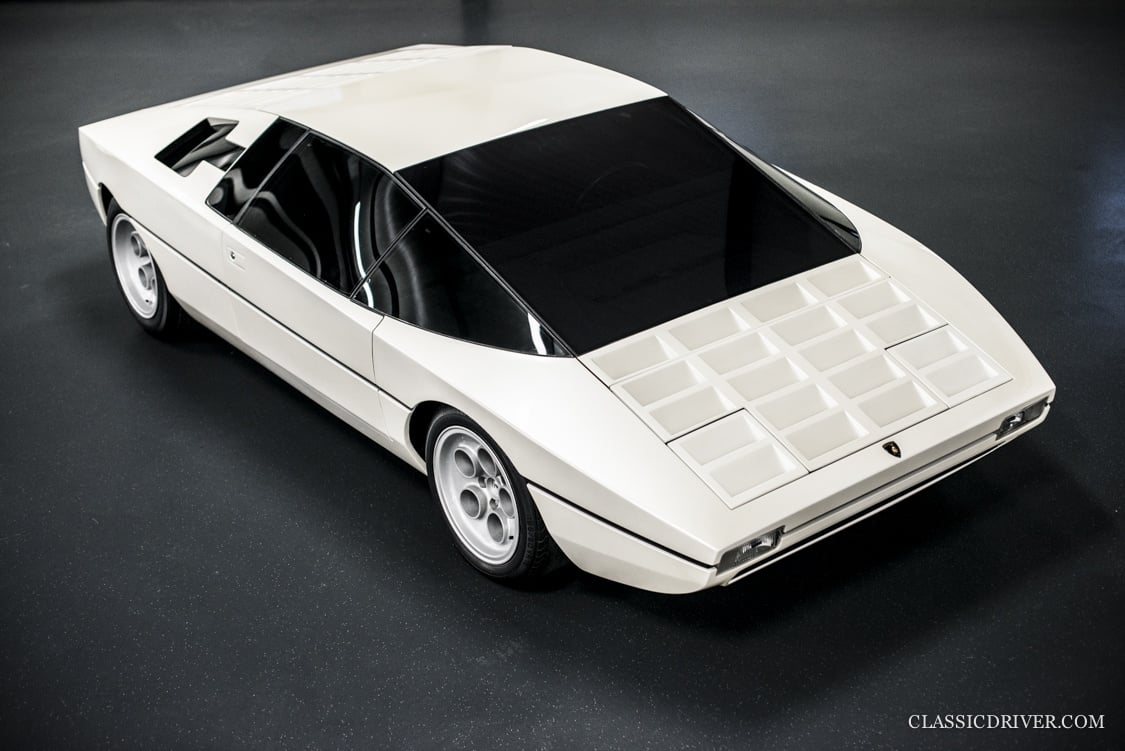

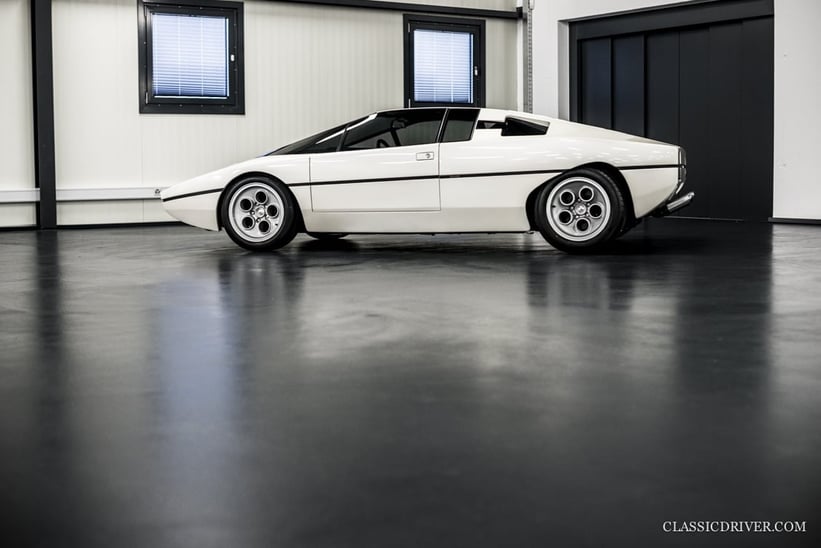
A good idea is often not enough. Whether an automobile becomes a bestseller or ends up collecting dust in the lower parking levels of history depends on a number of factors. As important as the talent of the designers and engineers are the economic and social factors that promote success — and these were anything but conducive at the beginning of the 1970s. When the first examples of the Lamborghini Countach rolled out of the workshop in Sant’Agata Bolognese in 1974, the unshakable times of automobile manufacture were almost over. Ever stricter emission regulations and the effects of the oil crisis made life difficult for speed hunters. Even Ferruccio Lamborghini, who had spent 11 years founding and developing his own sport car brand, lost his passion for the company — selling his shares and retiring to his vineyard. To secure the financial future of Lamborghini, the board of directors wanted to produce a small, sporty entry-level model that would have only two seats and could be based on existing chassis and engines. The contract for the design concept went to Bertone from Turin and its chief stylist, Marcello Gandini, who had already worked with Lamborghini on the Marzal and Countach prototypes.
Living on the edge
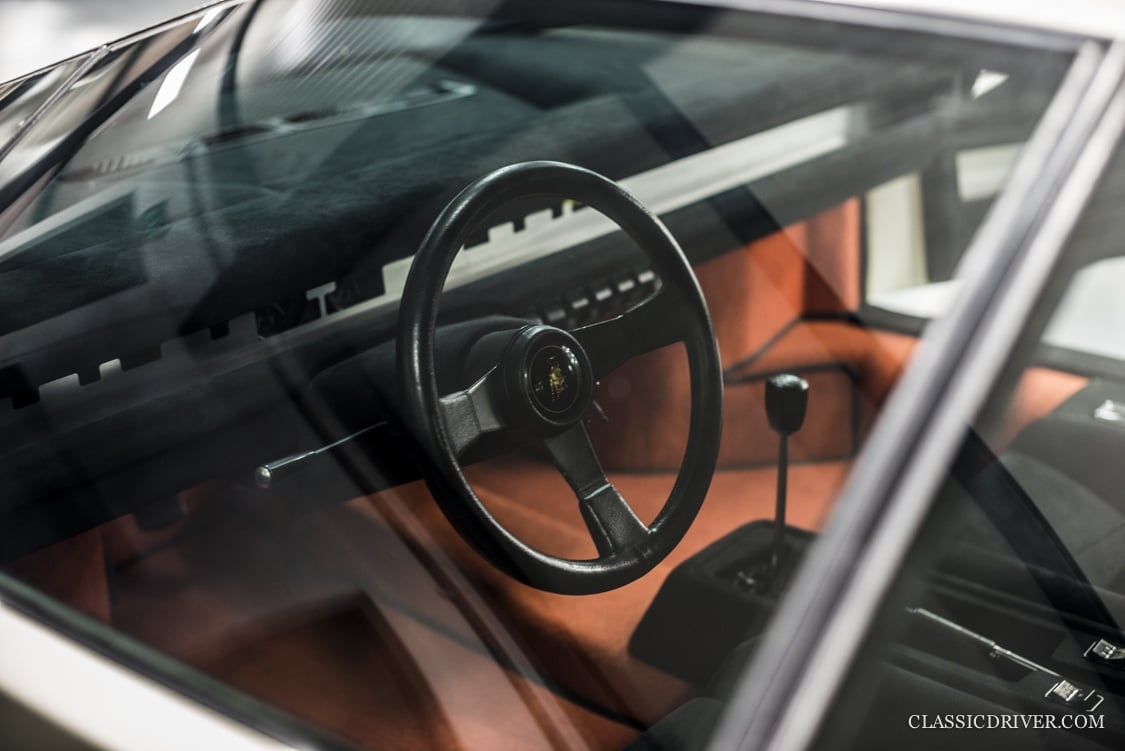
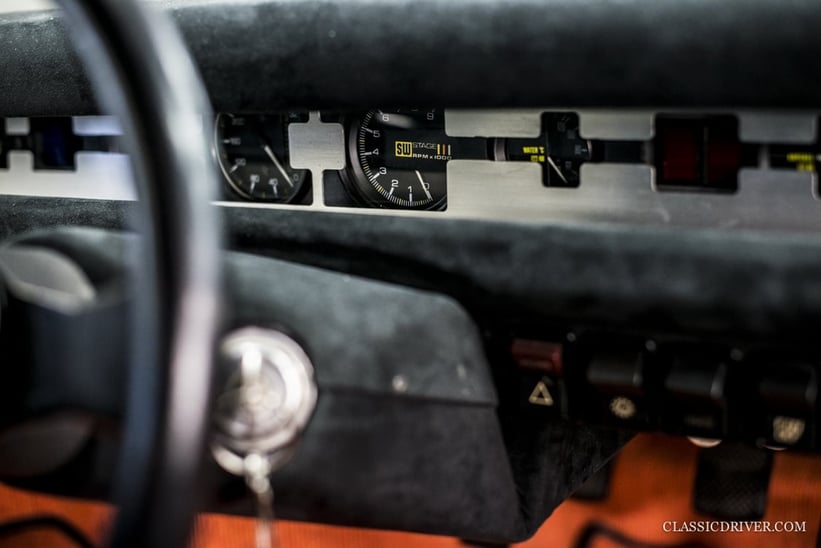

Although the windscreen was almost as flat as the bonnet, the full glazing offered the best all-round visibility. And while Bertone was the design house on the project, Gandini didn’t come up with this feature — the order came directly from Lamborghini's chief engineer, Paolo Stanzani. A striking style element Gandini did implement included traversing the front and the rear with a geometric slat structure and essentially ‘halving’ the body with a continuous line — wheel arches and all. Like the Urraco, the new model also had discreet folding headlights, but the five-hole rims, reminiscent of a revolver drum, were new, and would later become the hallmark of the large 12-cylinder models, from the Countach to the Murciélago.
A very mobile prototype
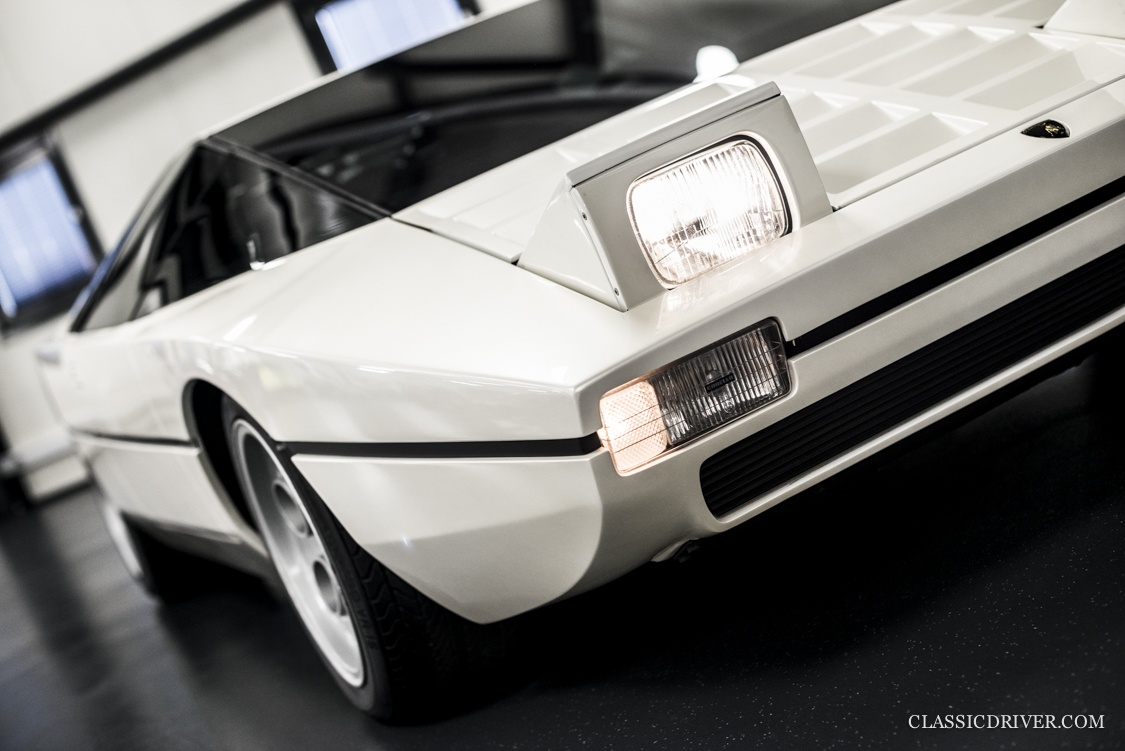


The Lamborghini Bravo — with its name prominent in stylized lettering at the rear of the prototype – made its first public debut on the Bertone stand at the Turin Salon in 1974. Since limited financial resources only allowed for the development of a single car, it had been decided from the outset that the Bravo would be a mobile prototype. And although the cockpit was cramped tightly with alcantara seats and only the most important elements, the mid-engine newcomer hit 10,000km in test drives after the show. In addition to the developers, test drivers, and journalists, René Leimer and Georges-Henri Rossetti, who headed up the sports car brand after the retreat of its founder, were driven back to Switzerland in the Bravo. And while the compact wedge-shaped design needed some convincing, the driving qualities were highly praised by such magazines as Road & Track, with its control and handling being described as what they had always wanted from the Urraco.
The dream of a small fighting bull
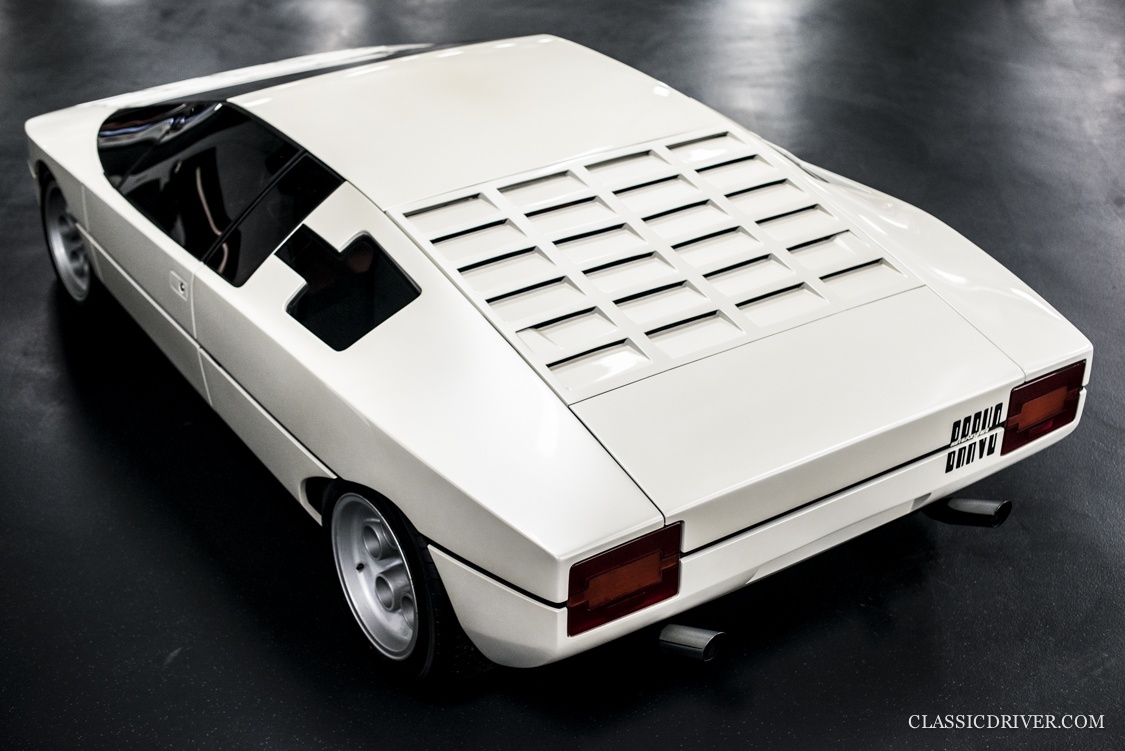
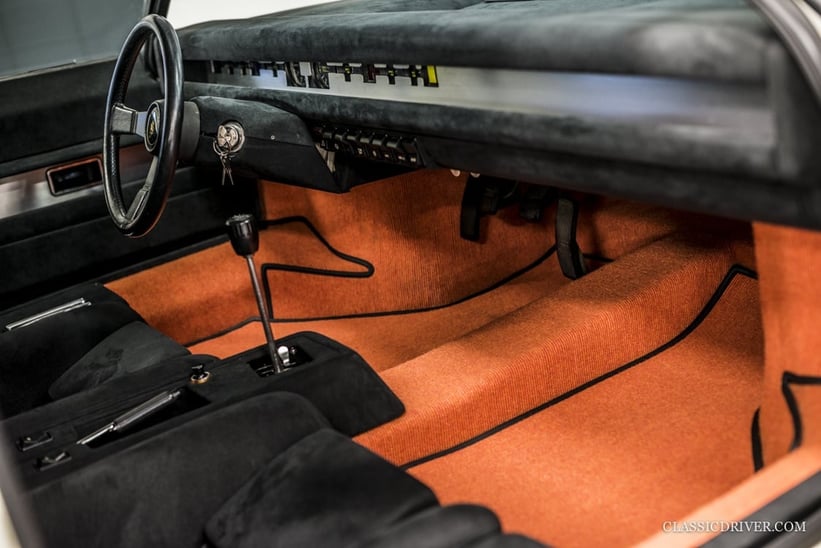
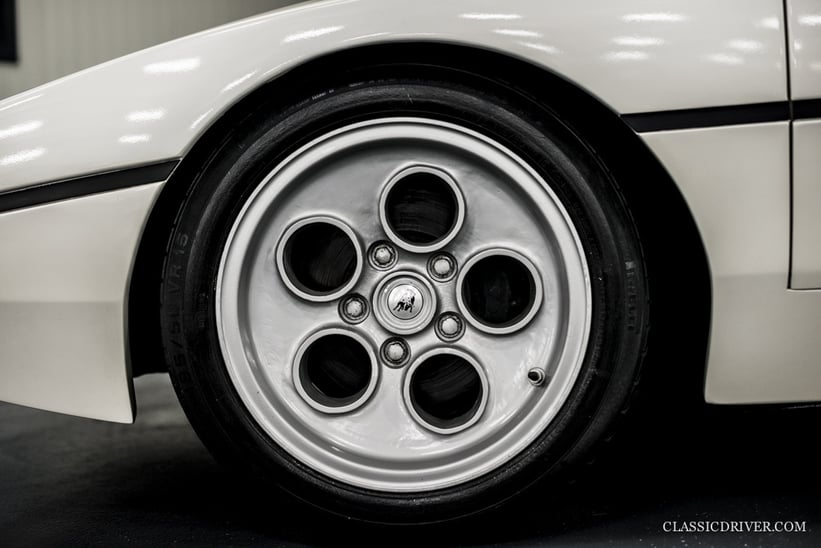
Over the years following its debut, the Lamborghini Bravo attended the world’s most important motor shows, from Paris and Barcelona to Geneva and Tokyo, changing the colour of its paint from show to show, from bright gold in the beginning to metallic green in 1977, then gold in the 1980s, and finally, to pearl white, as its seen today. Although Lamborghini desperately needed the ‘Baby Countach’ in the fight against the compact eight-cylinder models of Ferrari, Maserati, and De Tomaso, the disastrous financial situation of the company made it impossible for it to go into production. Also, the geometric shape would hardly have passed a modern crash or approval test. In 1976, Lamborghini implemented the Silhouette, a road-going two-seater with eight cylinders, but the model, which was clearly designed for the American market, with its thick bumpers and Targa top, couldn’t win over customers and only 54 copies were built. The Lamborghini Jalpa, which was built between 1981 and 1988, was somewhat more successful, with over 400 built, but the V8 couldn’t compete with the Countach. It was only in 2003 that the dream of a small fighting bull with the wedge shape came true with the Lamborghini Gallardo. Designed by Belgian designer Luc Donckerwolke, who skilfully transformed Gandini’s geometrical rigor into the 21st century, the Gallardo has become the most successful model in the brand’s history.
Standing ovations for the Lamborghini Bravo
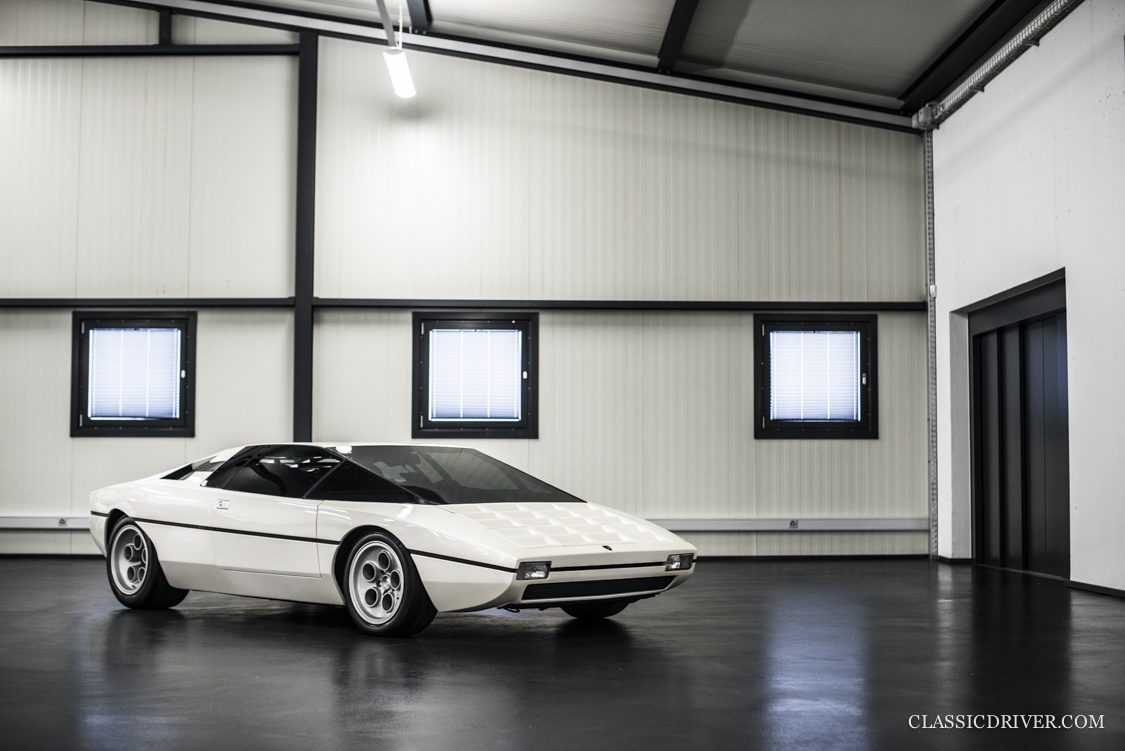
From 1987 to 2011, the Lamborghini Bravo remained in the public eye, as it resided within the Bertone Museum in Turin, where it was admired by many a fan over the years. When the museum was dissolved and the collection was auctioned off, the Bravo changed hands for almost 600,000 euros. After careful restoration, the prototype is now a part of one of the most important private Lamborghini collections in the world. And even though the little racer is not one of Marcello Gandini’s most spectacular designs, it’s still amazing — with its perfect proportions, geometric equilibrium, and crisp details all the unique signature of one of the grand masters of modern Italian car design. It is believed by many that if Lamborghini had built the Bravo, it would have been one of the greatest and most coveted icons of Sant’Agata.
Photos: Rémi Dargegen for Classic Driver © 2017


















































